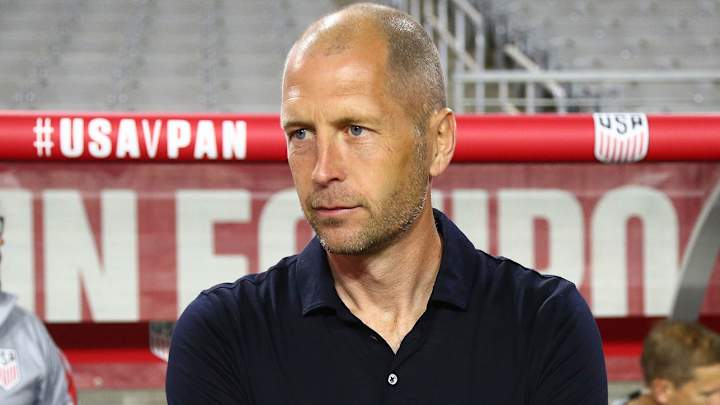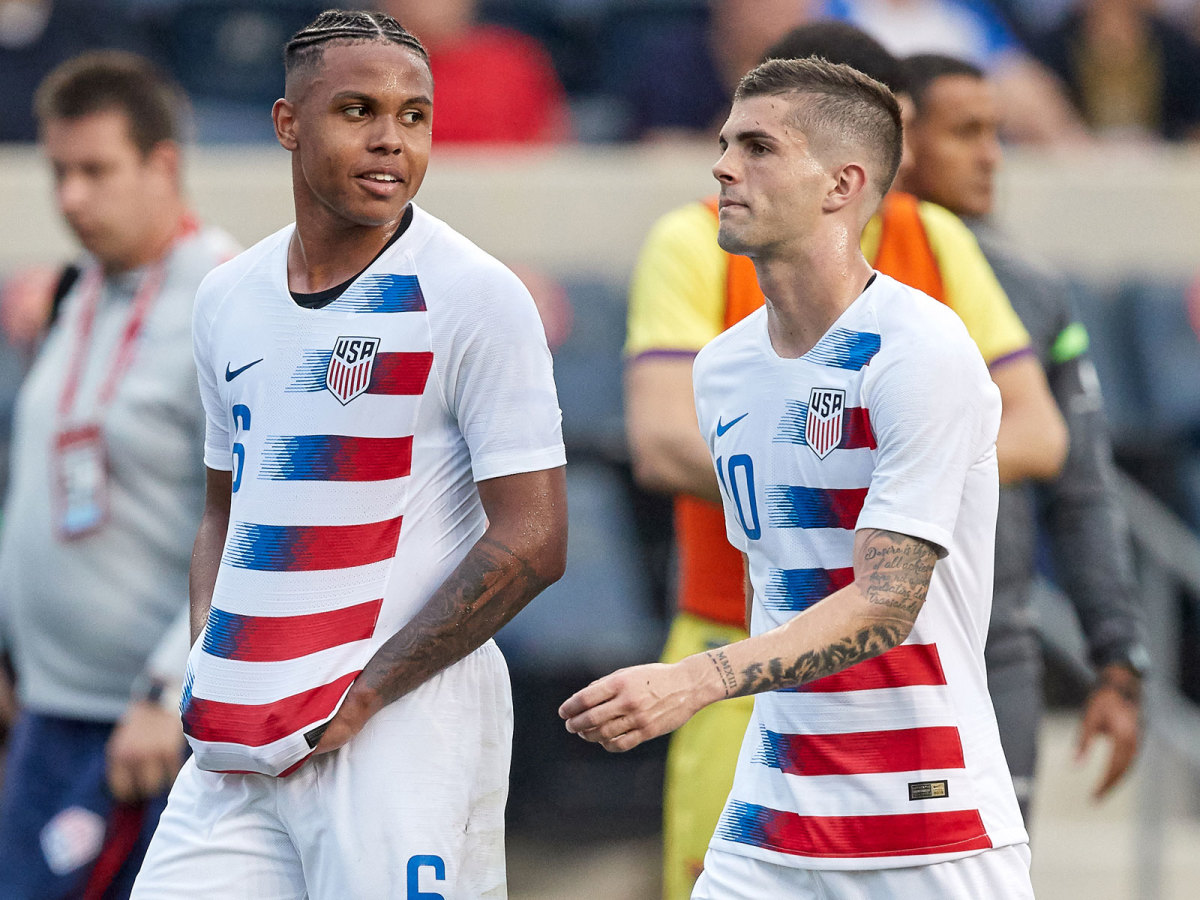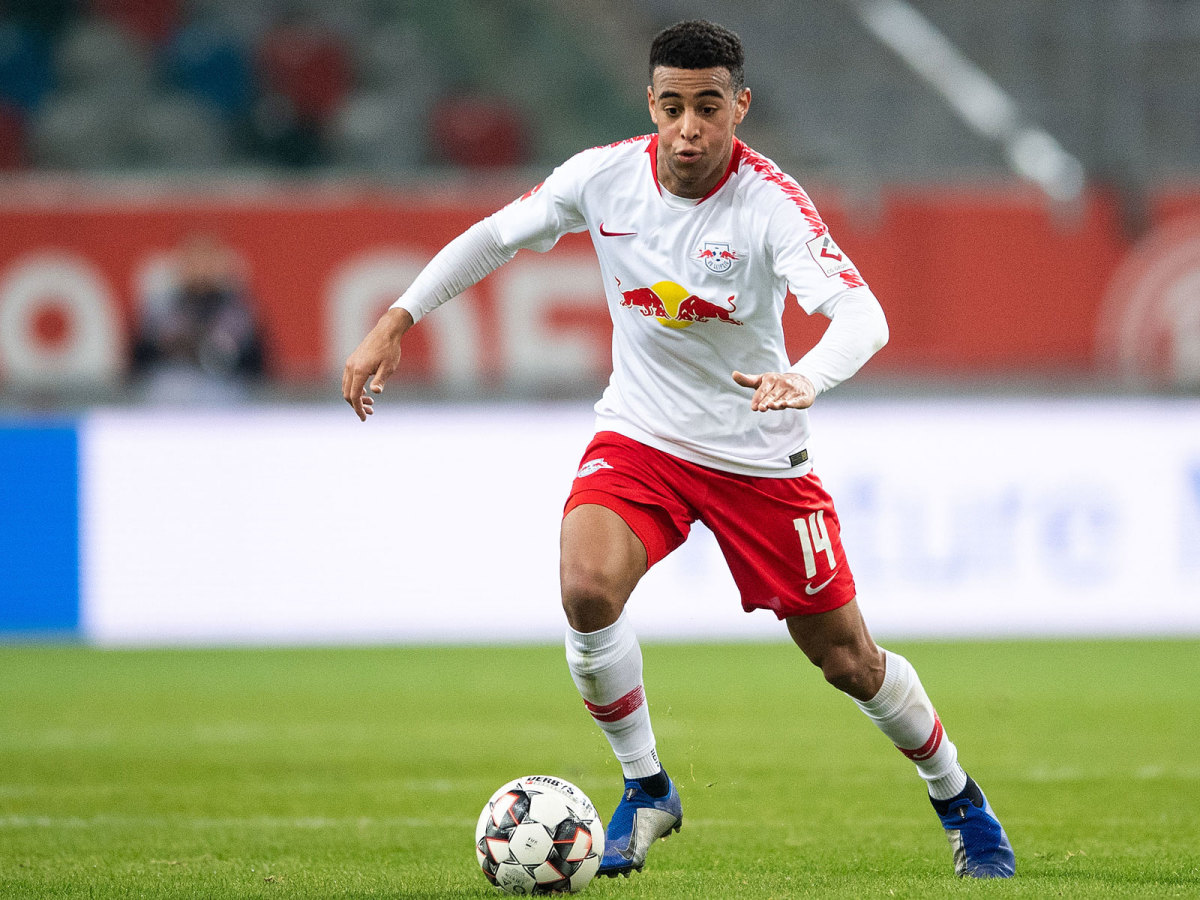Envisioning USMNT's European-Based Players in Gregg Berhalter's System

Gregg Berhalter lifted the lid on his plans for the U.S. men's national team Sunday night during his debut as manager. He displayed a true tactical plan and a foundation for what to expect from the USMNT going forward. Naturally, the plan will shift based on opponent and circumstance, but the basic tenets figure to remain the same.
Berhalter hasn't been coy about his approach. He's spoken repeatedly about trying to disorganize the opponent and press to win the ball back when it's lost while also playing through and behind the opposition's lines, none of which makes for particularly revolutionary steps that a team should take. But just how he planned for his team to do that came to light in a 3-0 win vs. Panama, an overmatched, experimental opponent that won't go down as one of the tougher foes the U.S. faces during this World Cup cycle.
The U.S. carried out Berhalter's plan, operating in a 4-3-3 when trying to win possession and shifting shape into more of a 3-2-2-3 when on the attack to push numbers forward and overload the attacking zones. The result was a match in which the U.S. dominated possession and carved out a good number of quality chances. Not everything was carried out with precision, but the bright spots were clear.
"It was a good baseline," Berhalter said following the match. "It gave us enough content to work with. Some of the movements we're working with on the wings are very complicated movements. It involves three players interchanging and still with the intention to disorganize the defense and get behind their lines. At some times we were a bit tentative with that and then there were other times where it came off and it was really nice. ... The wing combinations I liked. We're playing with two 10s to purposely find them between lines. I think that's very important, and we did that very effectively at times."
CREDITOR: A Night of Multiple Successful Debuts for the USMNT
Watching the likes of Djordje Mihailovic, Nick Lima, Corey Baird, Jeremy Ebobisse and other lesser-experienced and heralded players carry out Berhalter's vision was one thing, but while viewing the match you couldn't help but wonder what it would look like with the players expected to feature more regularly in competitive matches going forward.
"We had that in mind also when we're envisioning the structure of the team," Berhalter said. "We're projecting some guys in what positions they can play and how we're going to teach them, how we're going to train them, what the sessions need to be. Right now the focus is working on this group of players."
Berhalter will have just one brief camp and two matches before the pre-Gold Cup friendlies hit to integrate the European-based players into his system and feel good enough about things to trot them out into a tournament environment. So just how might the likes of Christian Pulisic, Josh Sargent, Tim Weah, DeAndre Yedlin, Weston McKennie and Tyler Adams fit into how the U.S. played Sunday? Let's take a look:

Sargent in the Zardes role
Josh Sargent continues to get minutes for Werder Bremen, and it's not hard to envision him in the striker's place atop the formation. Zardes did well in holding up the ball and linking up with others in the attack, and he likely should have had assists in consecutive sequences after his lay-off passes for Baird and Lima resulted in quality chances that went wide. Even though Zardes was wasteful with his own chances on goal, Berhalter praised the forward's process and seemed happy with the end result.
"For forwards, you're not always going to hit the back of the net, but his work rate was excellent," Berhalter said. "He got in enough spots to score a goal. That's what we're looking at, because I know with Gyasi it's eventually going to go in."
Given Sargent's savvy, finishing proficiency, ability to hold up the ball and pick out the right pass, you'd expect him to have a direct line to that starting role, and it's one he can seize with a strong March camp–presuming he's healthy and called in, of course.

Weah in the Ebobisse role
While Ebobisse works hard and did deliver a nice ball for the USA's first chance of the night, he's not naturally a winger. Enter Weah, who, despite playing in more of a No. 9 role on his loan with Celtic thus far, has the speed and dribbling ability to take defenders on and act as more of a threat from that spot on either side of the field. Berhalter will demand a strong pressing and defensive work ethic and an understanding of the intricate combinations he wants to see, and that will all have to be learned. But from a pure fit on the wing, Weah has the goods to deliver there.

Pulisic and McKennie in the Mihailovic-Roldan roles
Mihailovic was largely fantastic on his debut and earned extreme praise from Berhalter for his work in camp. It looks like he'll be given more opportunities beyond this camp, but if the U.S. is going to put its best potential No. 10 on the field, then Pulisic will be the one stepping into that role. Mihailovic had a wonderful game and excelled alongside Cristian Roldan. Both enjoyed freedom going forward and testing the defense, and plugging the likes of Pulisic and McKennie–who have a strong friendship and a baseline for midfield chemistry–into those spots should give U.S. fans cause for excitement. McKennie can play a more forward-pushing role and has for Schalke, and hearing Berhalter describe what he saw from Roldan, it's not crazy to think the same of McKennie.
"Cristian Roldan we think is technical but also really good in transition, so he's in a spot now where when we lose the ball he can press right away. ... What we're trying to do is put players in position that plays to their strengths."

Adams in the Bradley or Lima role
4 - On Sunday, Tyler Adams became the fourth different RB Leipzig player to tally 9+ duels won, 9+ recoveries and 70+ touches in a #Bundesliga match this season. Debutant. #DieRotenBullen pic.twitter.com/dw2GcAmK6P
— OptaJack⚽️ (@OptaJack) January 28, 2019
Adams started and went the distance for RB Leipzig in a right-sided midfield role over the weekend, and he's one of the more versatile midfielders in the U.S. pool. Picturing him directing traffic in the midfield, looking for the occasional incisive pass and remaining a shield for the back line isn't unreasonable at all, and if Bradley were to make way from the starting lineup, it would figure to be Adams or fellow Germany-based midfielder McKennie stepping into that spot. That's no given, as Berhalter held high praise for Bradley's performance.
"He's a very smart soccer player. You don't get 143 caps unless you have real quality, and I think that's what's undervalued in him," Berhalter said, "Getting to work with him up close and see training and see his game intelligence and technical ability, it's impressive."
So if Bradley remains in a defensive, facilitating midfield role, then where would that leave Adams, who surely has a big role to play going forward? On ESPN2's broadcast, Taylor Twellman speculated about Adams in the right back role, especially considering it's one that gives freedom for the player to push forward and help out in the center of the field. Adams certainly has the engine, intelligence and field-awareness to carry out such an important role, and the more looks he's exposed to in Germany, the further along his education will be in case he's called upon to feature for the national team in a way he really hasn't before.
"It's not easy to ask your right back to get the ball with his back to goal at times, it's not easy to ask him to pivot in midfield and create space for other people," Berhalter said, upon delivering his praise for Lima's play and describing the duties of a right back in his system.
As for Yedlin, is he capable of fulfilling the duties required of a Berhalter right back? You'd expect him to be given the opportunity to at least prove he can be, even after his subpar play in his most recent caps under Dave Sarachan. Given how well Yedlin gets forward and with the attacking qualities he possesses, though, it wouldn't be too out of the realm of possibility to see him in more of an attack-minded role along the lines of the one Baird played vs. Panama.
